

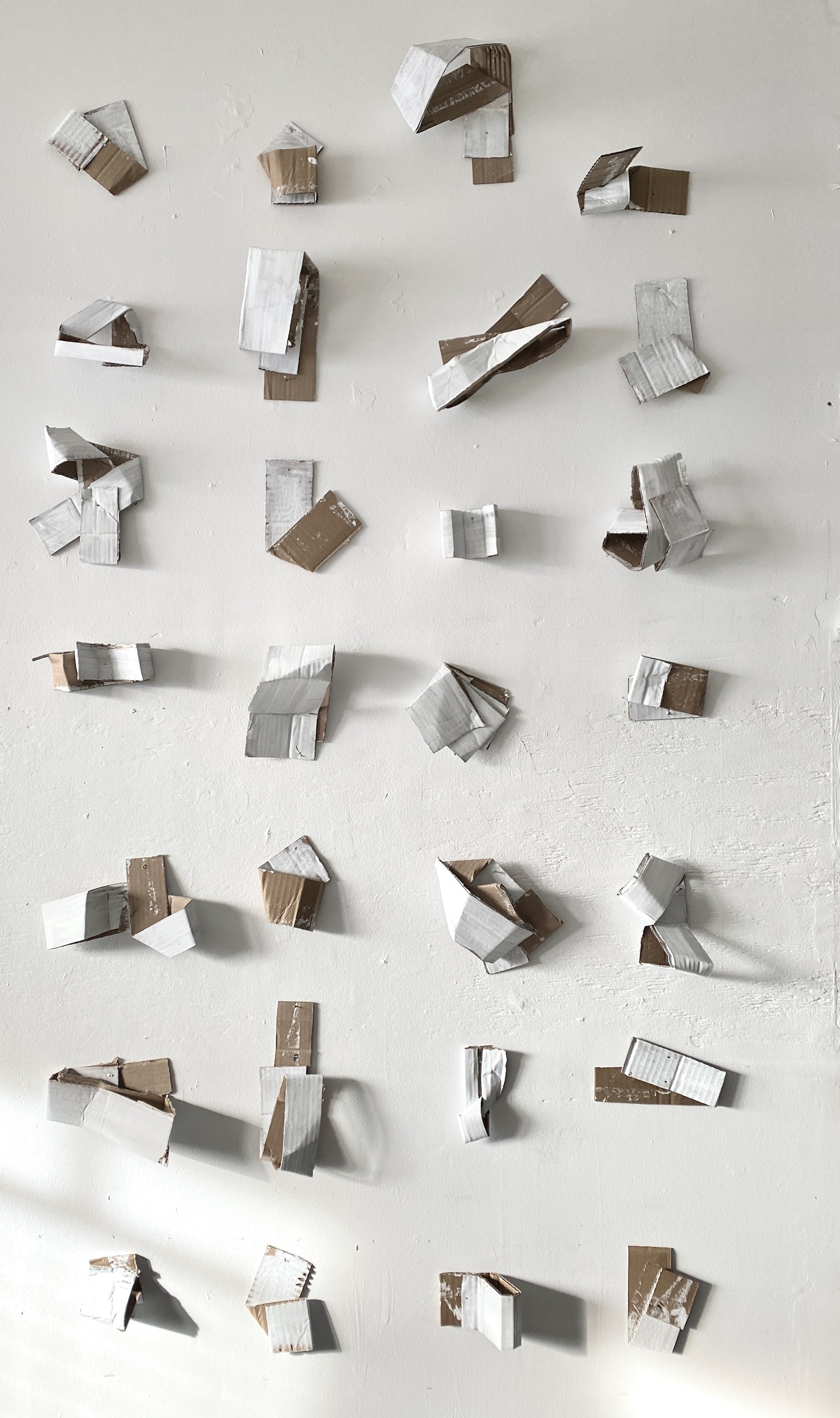
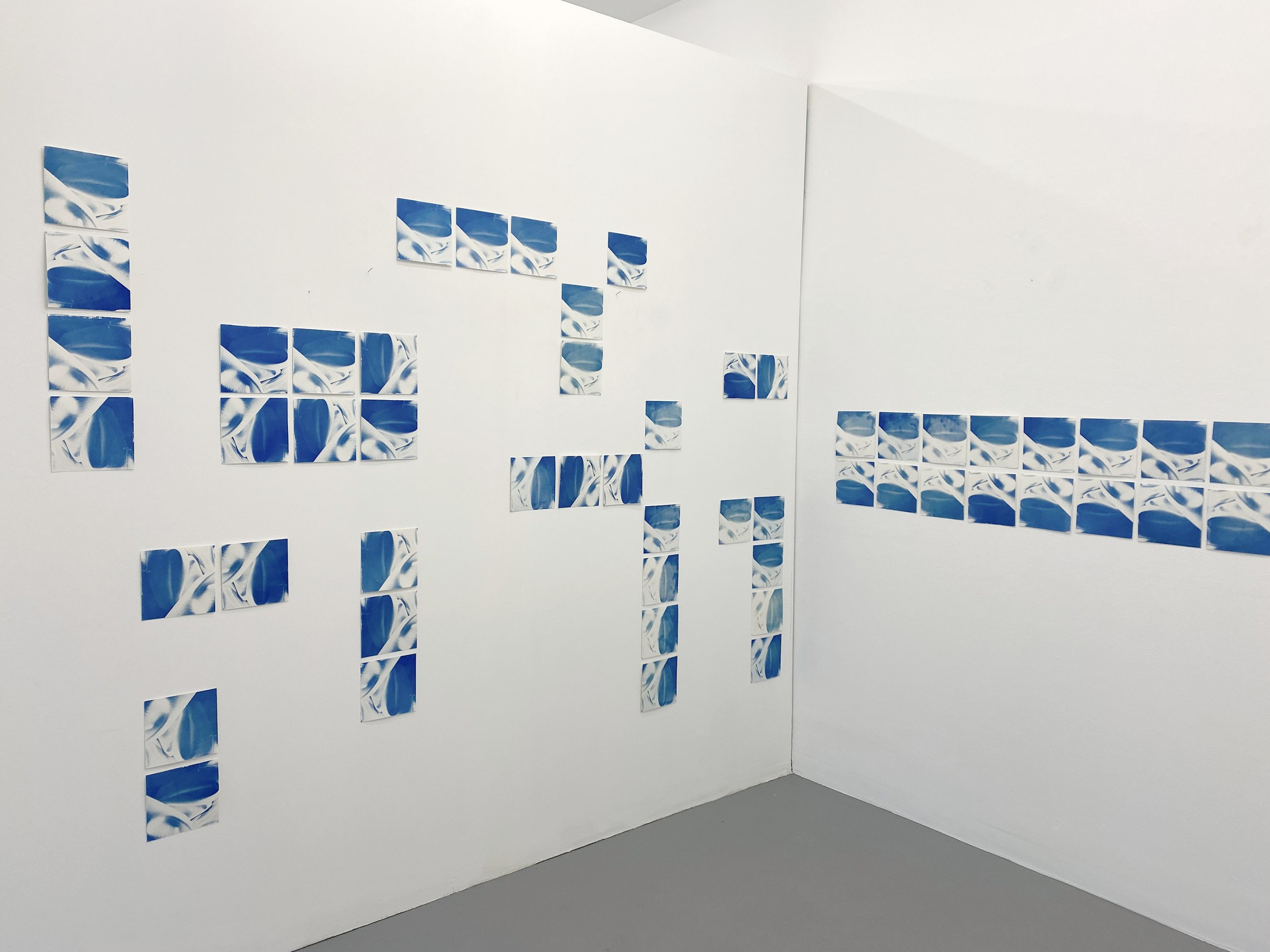
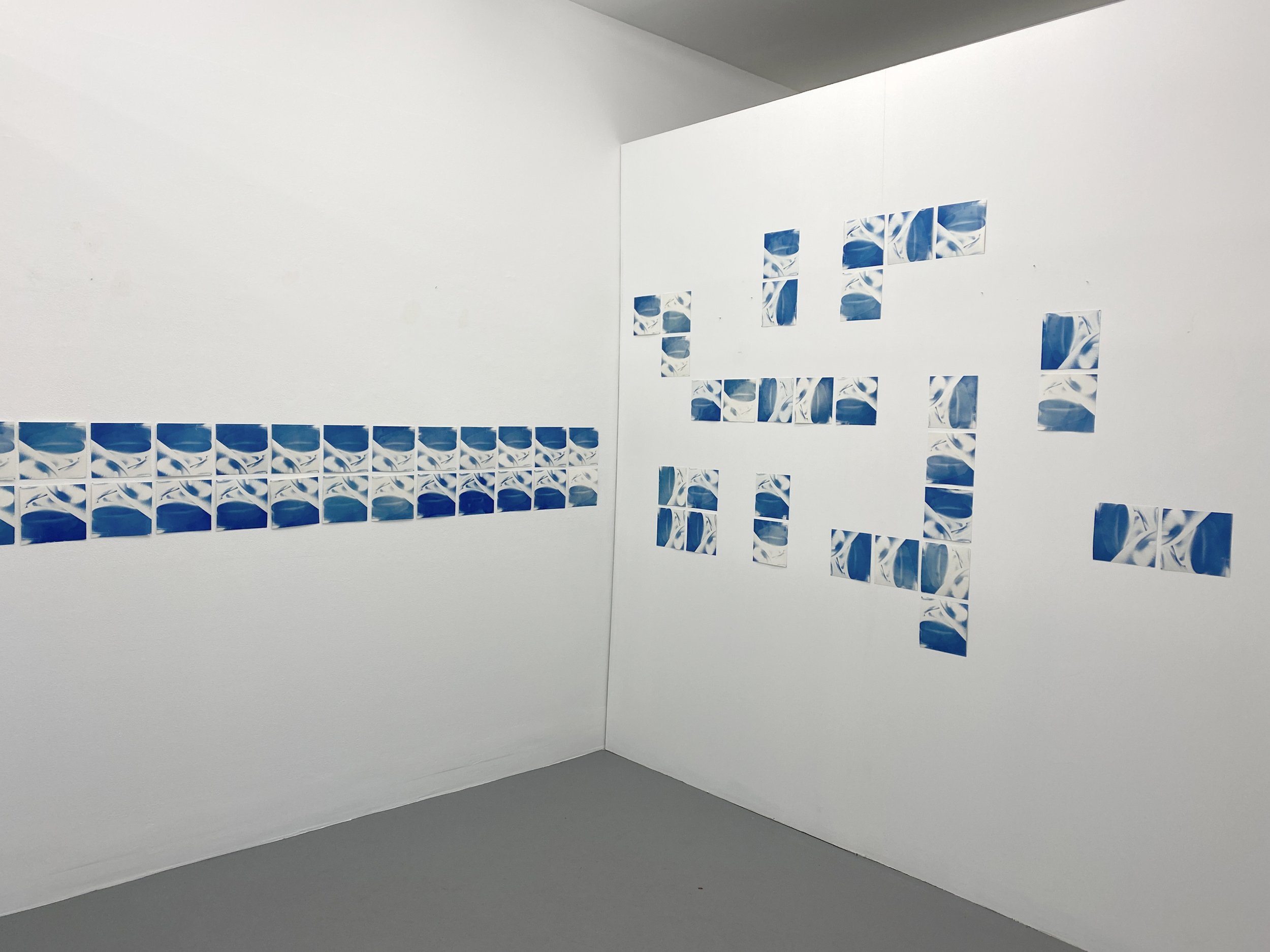
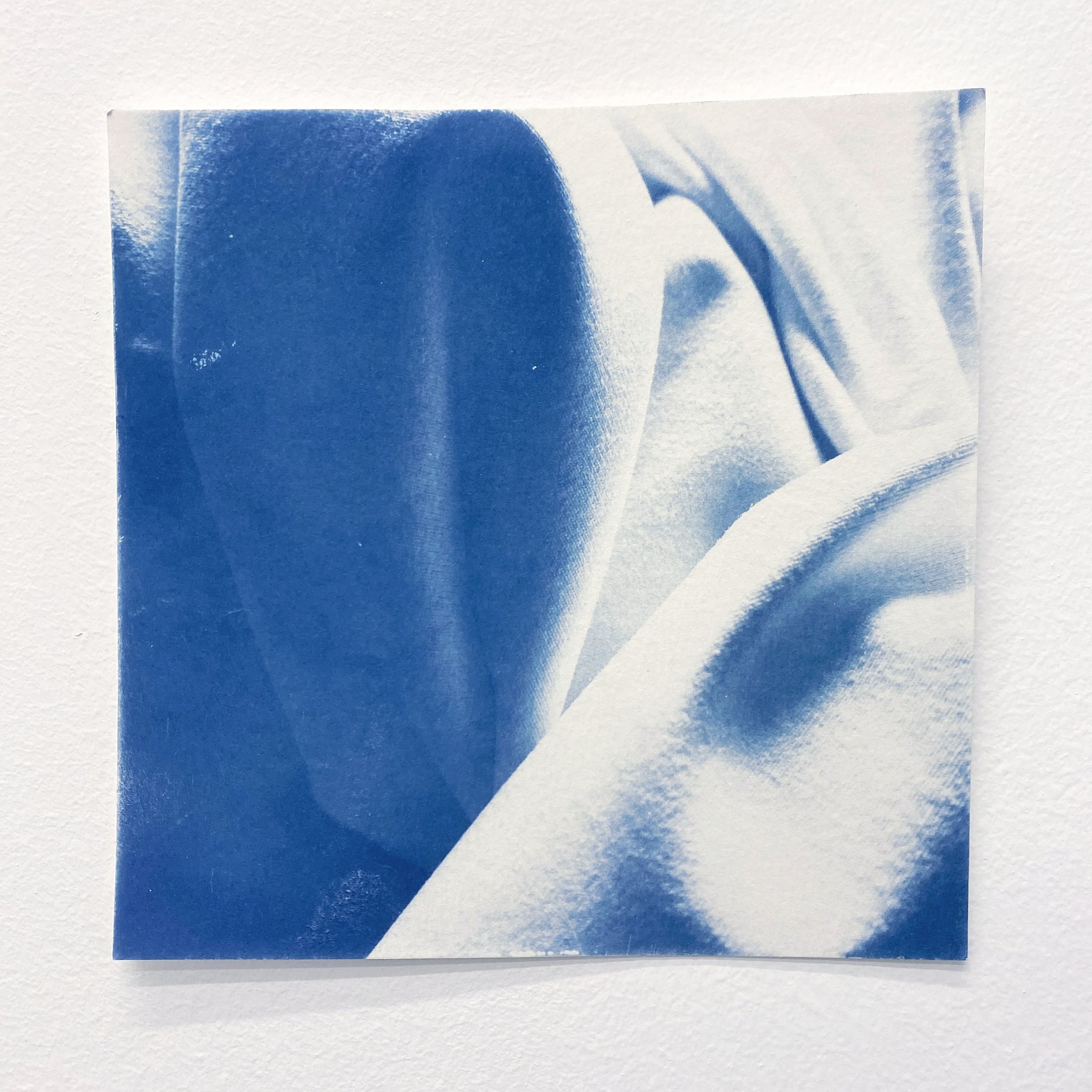
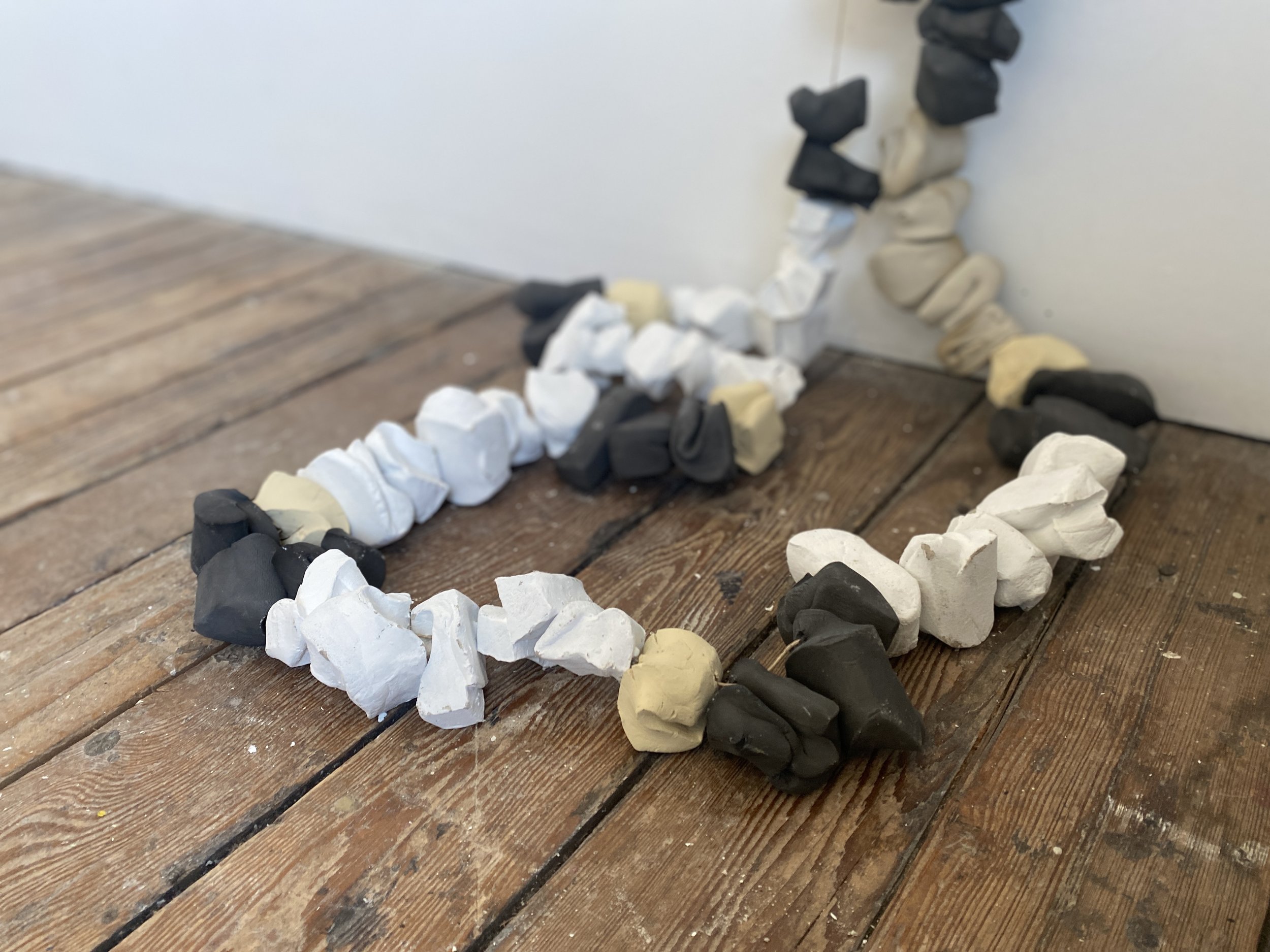
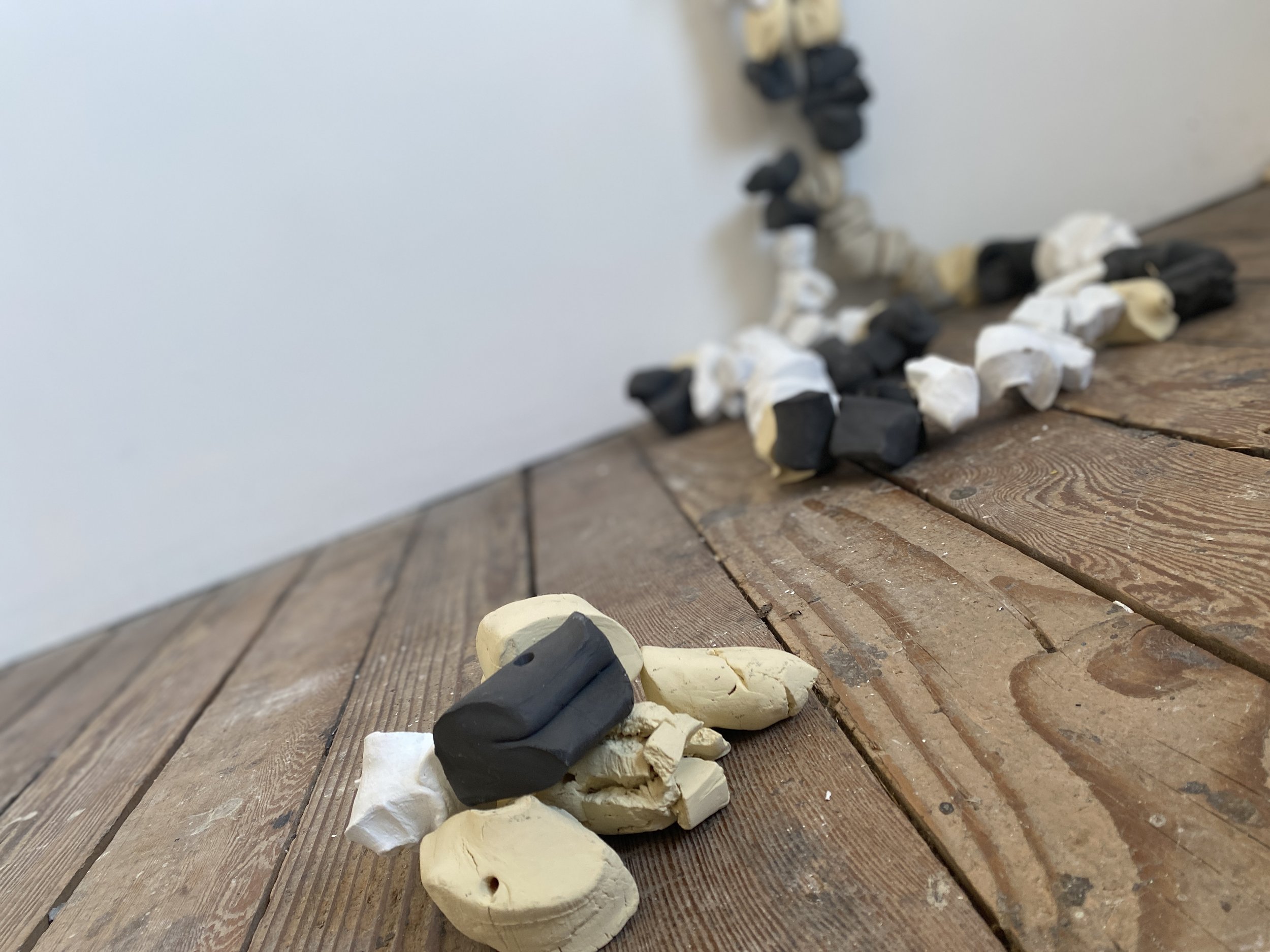
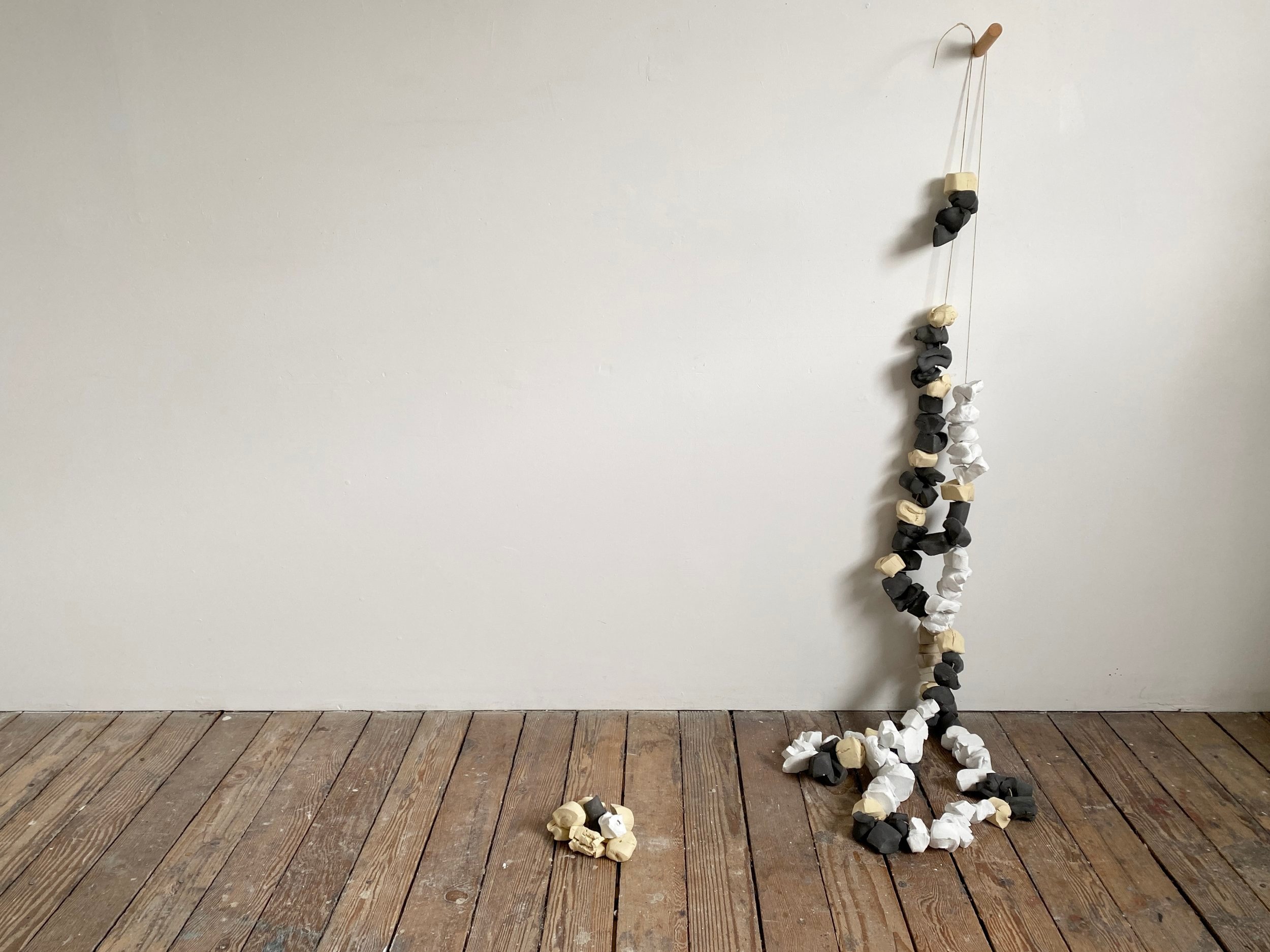
translanguaging
[ trans-lang-gwi-jing, tranz- ]
noun
Linguistics. the integrated use of all the languages an individual speaks in a single linguistic system, often involving the mixing of grammatical, morphological, or lexical features from more than one language or dialect.
Translanguage sequences is an ongoing series of actions undertaken to attempt nervous system regulation. Each sequence is accompanied by a set of instructions in a search for connection. These material events are couched within the language of scientific thought, nonsense, and institutional authority. The concept emerged as I began to become aware of the environmental and social impacts on my divergent body. This awareness required a whole new methodology for discovering how to heal from past traumas and avoid further pain - a new way of living that responded better to nervous system disregulation. Ten sequences of 100 artefacts or leavings are in process.
Each series of simple repeating actions using common materials, invites slowness, heavy work and haptic memory. I am drawn to heavy obsolete mechanical tools that can join me in this space - the loom, typewriter, printing press. I am drawn to machines that have limited capabilities and have their own specific languages - button operations, their function also dependent on sequences. I attempt to work translingually with them as well, combining processes and materials in unexpected ways, bringing technical skills from one mode of making into another. My workday resembles an assembly line, but efficiency is not the goal. This way of working allows me to listen to both the materials and to my own body, finding the appropriate acceptance and resistance of the limitations each material/tool/process embodies.
The outcome of these actions are objects that exist as a kind of self-portrait, reflecting the strategies that I use to manage multiple divergences in everyday life. I care for these objects through organization and through the application of structures borrowed from institutional authority. I apply arbitrary and nonsensical taxonomies to acknowledge social structures that do not reflect my lived experience. I build my way out of boxes and into a way of engaging that is not dependent on a particular set of physical characteristics, neurotypes, or ways of being.
Thank you to the Canada Council for the Arts for ongoing support for this project.